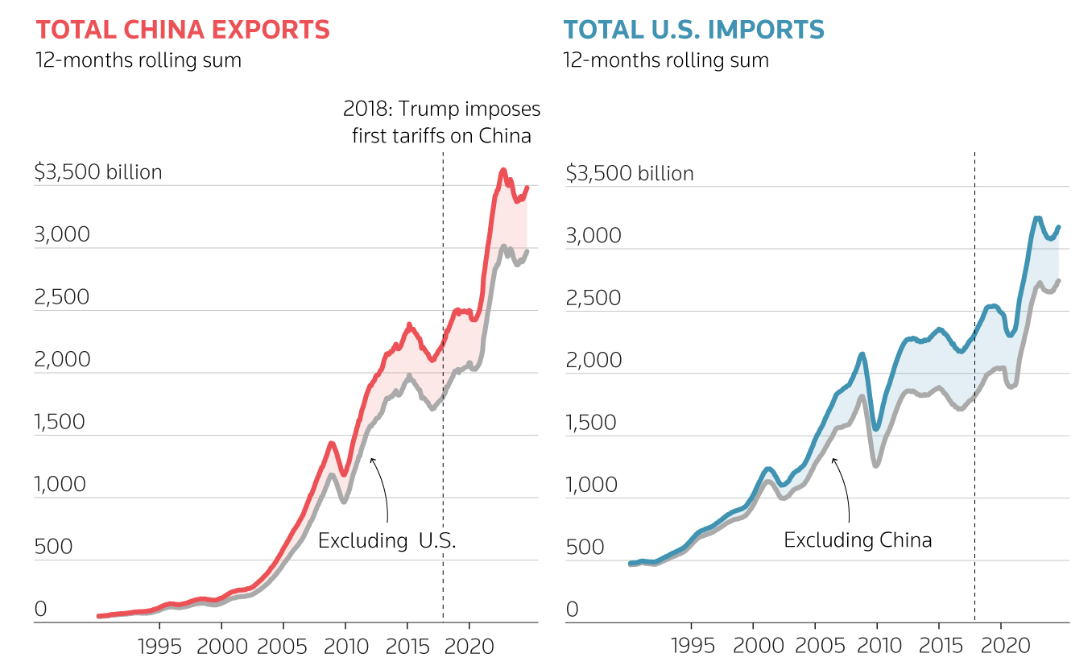- The ADP Employment Change will likely have a limited impact on financial markets.
- The US private sector is expected to have added 139,000 new positions in December.
- The US Dollar Index corrected extreme overbought conditions, retains its bullish stance.
Financial markets slowly return from the winter holidays and the macroeconomic calendar starts to be packed. These days, the focus has been on the United States (US) and President-elect Donald Trump’s proposed tariffs. Market sentiment has led the way in the absence of relevant data, with the mood seesawing between hopes and despair of what the new US administration would mean to the global economy.
US employment, however, is taking centre stage. The ADP Research Institute will release the December Employment Change report on Wednesday, a survey that estimates the number of new jobs created by the private sector.
It is worth remembering that the ADP report is typically released two days before the official Nonfarm Payrolls (NFP) report. The ADP data is often viewed as an early preview of the Bureau of Labor Statistics (BLS) jobs report. However, the connection between the two has proven inconsistent over time.
Employment growth and its role in shaping Fed policy
Employment is critical, as is one of the two legs of the Federal Reserve’s (Fed) dual mandate. The US central bank should maintain price stability and pursue maximum employment. As inflationary pressures receded, the focus temporarily shifted to employment in the second quarter of 2024, as a strong labor market somehow posed a risk to inflation.
Still, the focus returned to inflation after the 2024 presidential election. Former president Donald Trump won the run and will return to the White House as the 47th US president in a few days. Not only did he achieve victory, but the Republican party also won control of Congress, leading in both houses.
Fears that Trump’s policies will result in fresh inflationary pressures have helped the Fed to adopt a more cautious approach to interest rate cuts. The Fed trimmed the benchmark interest rate for the first time in September, delivering cuts also in November and December to a total of 100 basis points (bps) in 2024.
In the December monetary policy meeting, however, US policymakers anticipated through the Summary of Economic Projections (SEP) or dot plot, that the pace of interest rate cuts will slow down this year, foreseeing just two potential trims in 2025.
At this point, it seems unlikely the ADP report, or even the upcoming NFP report on Friday, could affect expectations of two modest rate cuts. One-month figures on their own hardly affect the central bank’s stance.
According to the CME FedWatch Tool, the odds for an interest rate cut overcome those for an on-hold decision only in June.
With that in mind, ADP figures will probably be taken with a pinch of salt.
When will the ADP Report be released, and how could it affect the USD Index?
The ADP Employment Change report for December will be released on Wednesday at 13:15 GMT. It’s expected to show that the US private sector added 140K new jobs after gaining 146K in November.
Ahead of the release, the US Dollar Index (DXY) has retreated from a multi-year peak of 109.56 posted on Jan 2 and hovers around the 108.00 mark. A reading in line with expectations should have no impact on the DXY, particularly considering that the Federal Open Market Committee (FOMC) will release the Minutes of the December meeting later in the day. Speculative interest will likely wait for the document, hoping it could offer some clues on upcoming monetary policy decisions.
An upbeat figure could signal a stronger labour market, keeping the Fed on the hawkish side. As a result, the US Dollar Index should regain its prevalent strength. The opposite scenario, however, will not be as straightforward. A poor report will not be enough to boost speculation of a soon-to-come interest rate cut. The DXY may fall as an immediate reaction to the news, but the decline will likely be short-lived.
From a technical perspective, Valeria Bednarik, Chief Analyst at FXStreet, says: “The US Dollar Index (DXY) corrected overbought conditions in the daily chart, with the downward run losing steam. In the mentioned time frame, a bullish 20 Simple Moving Average (SMA) provides dynamic support at around 107.90, attracting buyers for a second consecutive day. Technical indicators, in the meantime, are turning flat above their midlines, reflecting easing buying interest.”
Bednarik adds: “Buyers will likely take their chances on dips, with immediate support at 107.74, the December 30 intraday low. Additional slides may see DXY falling towards 107.18, the December 13 high, with a break below 107.00 unlikely with the ADP release. Initial resistance lies at 108.55, the December 20 intraday high, with gains beyond the latter exposing the aforementioned 109.56 multi-year high.
Employment FAQs
Labor market conditions are a key element to assess the health of an economy and thus a key driver for currency valuation. High employment, or low unemployment, has positive implications for consumer spending and thus economic growth, boosting the value of the local currency. Moreover, a very tight labor market – a situation in which there is a shortage of workers to fill open positions – can also have implications on inflation levels and thus monetary policy as low labor supply and high demand leads to higher wages.
The pace at which salaries are growing in an economy is key for policymakers. High wage growth means that households have more money to spend, usually leading to price increases in consumer goods. In contrast to more volatile sources of inflation such as energy prices, wage growth is seen as a key component of underlying and persisting inflation as salary increases are unlikely to be undone. Central banks around the world pay close attention to wage growth data when deciding on monetary policy.
The weight that each central bank assigns to labor market conditions depends on its objectives. Some central banks explicitly have mandates related to the labor market beyond controlling inflation levels. The US Federal Reserve (Fed), for example, has the dual mandate of promoting maximum employment and stable prices. Meanwhile, the European Central Bank’s (ECB) sole mandate is to keep inflation under control. Still, and despite whatever mandates they have, labor market conditions are an important factor for policymakers given its significance as a gauge of the health of the economy and their direct relationship to inflation.
Economic Indicator
ADP Employment Change
The ADP Employment Change is a gauge of employment in the private sector released by the largest payroll processor in the US, Automatic Data Processing Inc. It measures the change in the number of people privately employed in the US. Generally speaking, a rise in the indicator has positive implications for consumer spending and is stimulative of economic growth. So a high reading is traditionally seen as bullish for the US Dollar (USD), while a low reading is seen as bearish.
Read more.
Next release: Wed Jan 08, 2025 13:15
Frequency: Monthly
Consensus: 140K
Previous: 146K
Source: ADP Research Institute
Source: https://www.fxstreet.com/news/adp-employment-change-set-to-show-us-job-growth-slowing-in-december-fed-unlikely-to-alter-plans-202501080830








Leave a Comment